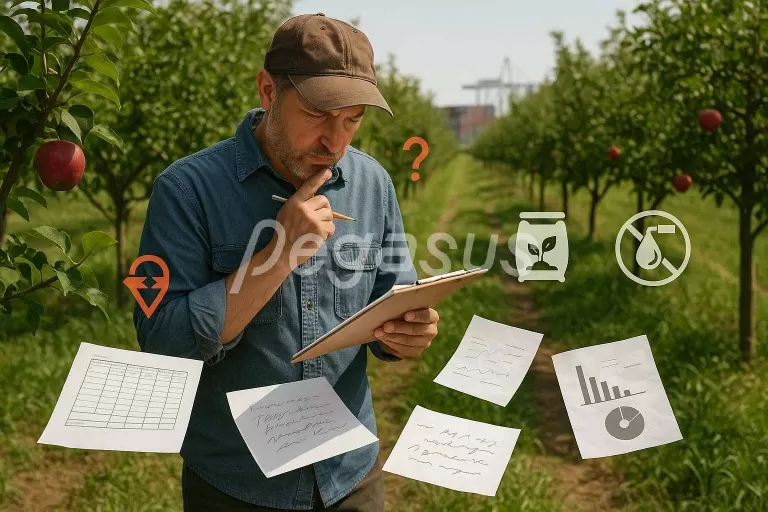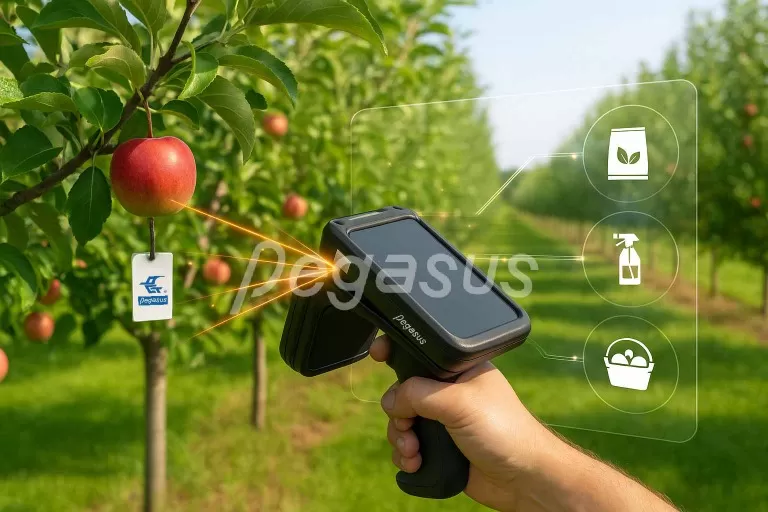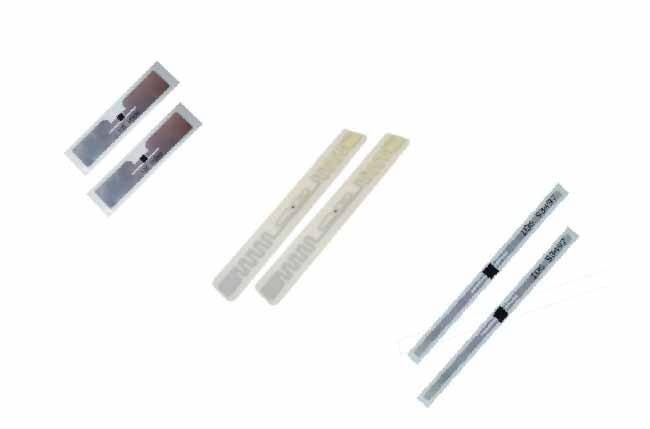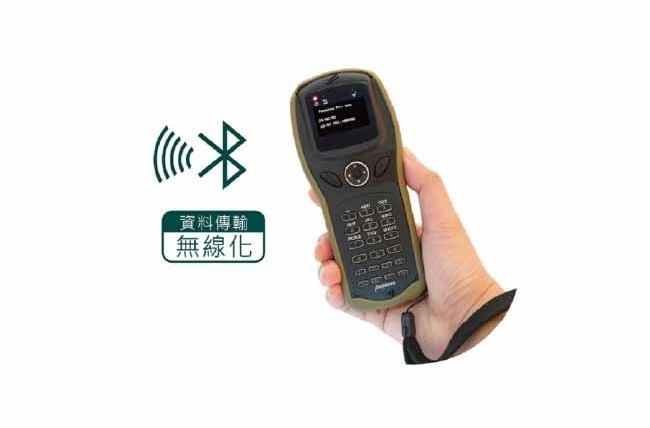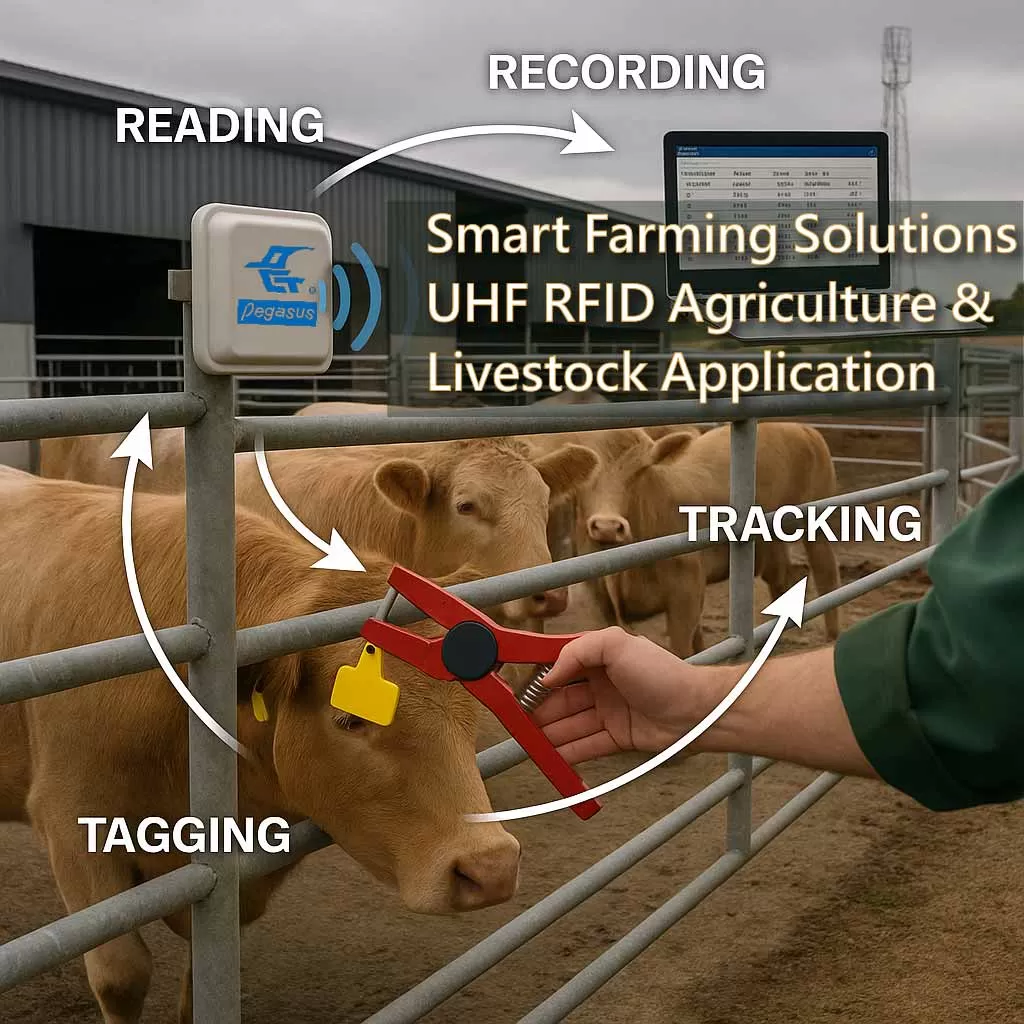RFID Smart Orchard Management |UHF RFID Smart Agriculture Application
Smart Orchard RFID Management |UHF RFID Smart Agriculture Application
As global agriculture continues to scale and adopt intelligent technologies, the complexity of orchard management is rapidly increasing. In export-oriented fruit industries, beyond production efficiency, food safety and traceability have become essential requirements in international markets. Traditional manual and paper-based recordkeeping is not only time-consuming but also prone to errors and omissions, making it difficult for orchards to meet the modern supply chain’s demand for transparency and real-time visibility.
In this context, building a digital production traceability system that ensures data accuracy and integrity has become a key challenge in agricultural transformation and modernization.
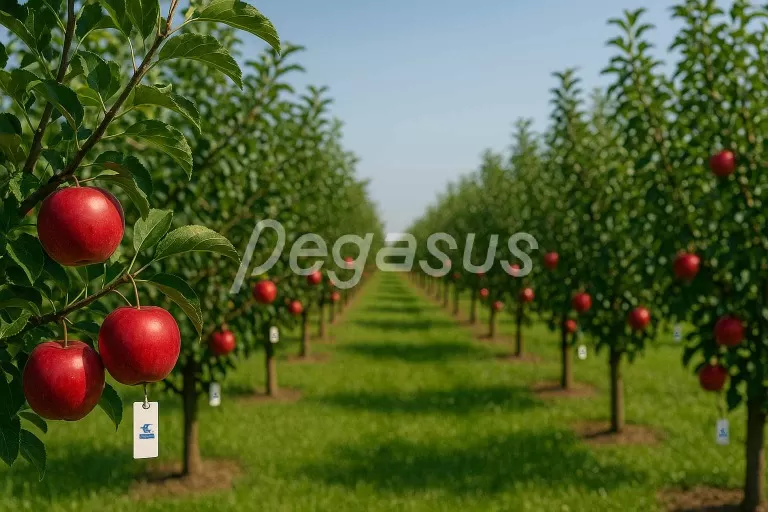
Challenges
- Low recording efficiency: Orchard inspections, fertilization, and pesticide spraying are mostly documented manually, which leads to missing or unclear records.
- Difficult traceability: As orchards expand, tracking each tree’s operational history becomes challenging, preventing full food safety certification.
- Lack of data-driven decision-making: Without real-time data, managers cannot adjust fertilization or pest control strategies promptly, increasing risks.
- Export market pressure: Premium markets in Europe and Asia require full “farm-to-table” traceability, which traditional management cannot achieve.
Application
The Smart Orchard RFID Management System effectively addresses these challenges. Its core framework includes:
1. UHF RFID Tagging for Fruit Trees
- Each tree is equipped with a durable UHF RFID tag serving as a digital ID.
- Each tag has a unique ID to ensure accurate, non-duplicated traceability data.
2. Handheld UHF RFID Reader for Inspections
- Farm workers use handheld UHF readers to scan tags during inspection, fertilization, or pesticide spraying, automatically recording operations.
- Data is instantly uploaded to the backend system, eliminating manual input errors.
3. Integrated Data Platform
- The platform automatically generates a production history file for each tree, including fertilizer records, pesticide usage, and harvest dates.
- Managers can analyze data to optimize agricultural operations and reduce resource waste.
Results
- Average inspection time reduced by 30–40%, significantly lowering labor costs.
- Comprehensive records for each tree with single-fruit-level traceability accuracy.
- Faster export inspections and certifications, improving global competitiveness.
- Managers can monitor orchard health data to prevent pest outbreaks and yield fluctuations in advance.
*Note: The above results are based on individual case studies. Actual performance may vary depending on implementation conditions.
Extended Value
- Food Safety: Enables full “farm-to-table” transparency that meets international food safety standards.
- Digital Transformation: Helps traditional orchards gradually adopt smart agriculture practices and accelerate industry upgrades.
- Sustainability: Precision agriculture reduces fertilizer and pesticide waste, aligning with ESG and environmental policies.
Global Trends
According to FAO and MarketsandMarkets reports, the global smart agriculture market is projected to exceed USD 30 billion by 2030, with RFID and IoT technologies as key drivers. The EU, the US, and Japan have made food traceability mandatory for exports. Agricultural digitalization is no longer just an efficiency tool—it is a requirement for entering global supply chains. With low cost, scalability, and reliability, RFID has become a practical solution for both orchards and livestock industries.
FAQ
Q1: Can UHF RFID tags withstand outdoor conditions?
A1: Yes, the tags are made of weather-resistant materials, capable of withstanding sunlight and rain for long-term outdoor use.
Q2: Do handheld RFID readers require special training?
A2: No, the operation is simple, and farm workers can easily learn to use the device with minimal training.
Q3: Can the data integrate with government or third-party platforms?
A3: Yes, the system supports standardized interfaces for integration with agricultural traceability and export certification platforms.
Q4: Is this system limited to fruit orchards?
A4: No, it can also be applied to tea plantations, vineyards, coffee farms, and livestock management.
Q5: Is the cost too high for adoption?
A5: UHF RFID tags are low-cost and suitable for large-scale deployment, while handheld readers are a one-time investment with strong long-term ROI.
Partnership Inquiry
📚 If you are a system integrator or distributor seeking RFID modules and technologies for agricultural applications, please contact us. Pongee provides RFID modules, readers, and technical integration support to help accelerate your project development and deployment.
Other
DATE


